Saodat Ismailova, Other Time and DAVRA research collective
February 22 – March 30, 2024
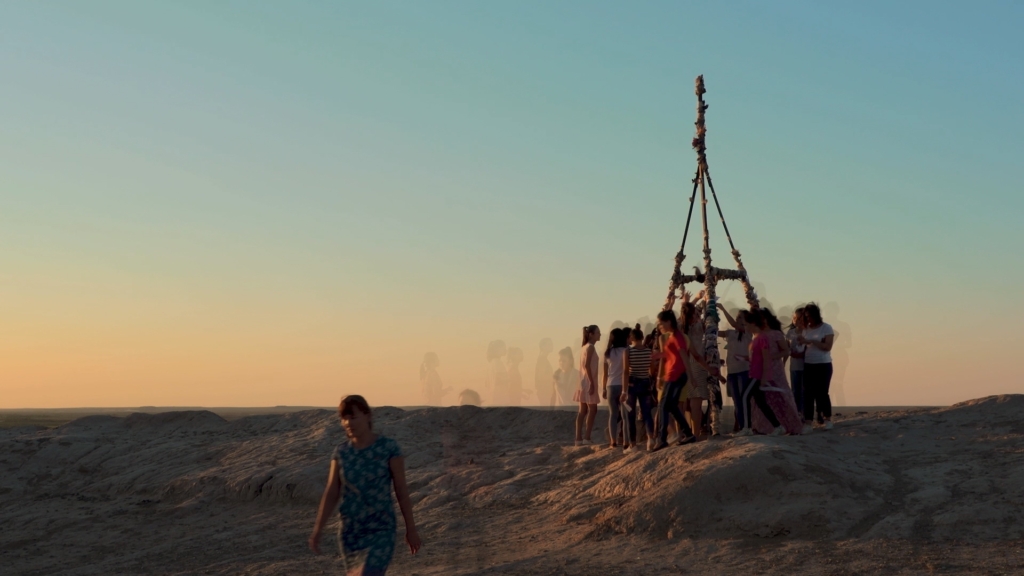
Saodat Ismailova, Chillpiq (still), 2018. HD film, color, sound, 17 min.
In artist and filmmaker Saodat Ismailova’s first Los Angeles exhibition, JOAN presents a collection of her recent moving image works, along with a selection of films by the Central Asian research collective DAVRA, which Ismailova established in 2021.
A continuous screening of moving image works, the film installation is organized in two consecutive programs. The first runs for four weeks and brings together three of Ismailova’s films: The Haunted (2017), Chillpiq (2018), and 18,000 Worlds (2023). The second program, running for the installation’s final ten days, speaks to Ismailova’s engagement with collective organizing. On the occasion of this exhibition, DAVRA invited Yuliya Sorokina, a curator from Kazakhstan, to organize DAVRA and Beyond: Videos of Central Asian Artists: a selection of films by young Central Asian artists working with moving image. March will include two parallel programs: On March 16th, Sorokina will speak about both the program and her thoughts on community building through the example of DAVRA. On March 30th, the final day of the exhibition, Ismailova will speak with Los Angeles-based writer Perwana Nazif on Zoom about her practice.
Fluidly moving between history to spirituality to social issues, Ismailova engages with themes of national memory, women’s emancipation, and immortality, and uncovers buried cultures and beliefs. Central Asia’s tumultuous sociopolitical trajectory looms in the background, as successive regimes have led to the erosion of languages, traditions, and the natural environment. Ismailova acknowledges these losses, while her work puts forward the importance of deep connections—human, more-than-human, and mystical—as ways to resist extractivist logics. She invites us to reimagine other ways of being in the world and passing knowledge from one generation to the next.
The artist’s upbringing in post-Soviet Uzbekistan and her engagement with the region and its cinematic memory shape her practice, which meditates on complex issues of spiritual longing and lost connections with the land. In her films, time seems to move both forward and backward. Ismailova translates traditions and knowledge from the past for our contemporary lives, reanimating past stories and personal and collective memories. At the same time, she looks toward imagined futures, other possibilities, and other ways of remembering what is forgotten, silenced, or lost. Often through archival experiments with images and sounds culled from Uzbek films, Ismailova’s work unfolds in extended shots in the tradition of observational cinema, bringing forward worlds long gone, invisible, and parallel.
The Haunted (2017) offers multiple political and natural histories of subjugation in the social history of modernization, through an open letter to the Turan tiger, a victim of the colonization of Central Asia. In the collective imaginary, the tiger is celebrated as much as it is elegized. Weaving geopolitical, environmental, and affective ecologies across time and space, the artist’s personal account tells of an imaginary encounter with the animal, who lives in the memory and dreams of the local people in Uzbekistan and Kazakhstan. Ismailova combines found audio and film footage with her own recordings. This includes “ghost archives,” such as memories collected in interviews and dreams, new footage composed of static shots of empty landscapes where the tiger was last seen, and a soundscape that uses a voiceover in the Uzbek language to convey the loss of the animal and the colonization of the land.
The work is also very personal: Ismailova connects the tiger to the soul of her great-grandfather, who was persecuted during the Stalin era and lived in a world without linguistic barriers, where ancient Uzbek, Persian, and Arabic were all spoken. Through the complex tension between the personal and collective, Ismailova explores familial loss, the Turan tiger’s extinction, and ecological erasure, while pointing to political and ideological divisions her country experienced as it entered and exited the Soviet era.
Chillpiq (2018) continues where The Haunted left off, near the Amu Darya River basin. In this work, forty young women climb a hill that is crowned by the ruins of a fort or temple. An abandoned Soviet-era flagpole becomes the site of gathering, as the girls—silently and one by one—tie cloth to the pole, dressing the archeological site, and reimagining the potential of the ruin. As the sunlight shifts, time escapes and the girls disappear into the site, blurring the physical and temporal landscapes.
The work was filmed at a site in the Uzbek landscape where ruins from an early civilization lay on the banks of the river. There, as it is told in an epic oral story, forty warriors lost their lives during battle. The girls in the film recall the characters of this tale of female resistance, “Qyrq Qyz”—Turkic for “forty girls,” where a young warrior defends her homeland against invaders with forty other girls trained in the art of war. In this film, we bear witness to the artist and her community of women performing an improvised ancient fertility ritual in an empty, mountainous landscape in which wind, sun, and river are ever present. Women play a critical role in indexing, holding, and passing generational and spiritual knowledge in Ismailova’s works. Here, the women learned this ritual from their mothers, perhaps without words, and continue to hold and teach these traditions.
Ismailova’s most recent work, 18,000 Worlds (2023), meditates on the mystical idea that the universe is made up of 18,000 worlds and the world we live in is just one of them. This idea appears in religious poems that are part of daily life in Uzbekistan and the writings of twelfth-century Persian philosopher Shihab al-Din Yahya al-Suhrawardi. It points to our colonial past, the transmission of memory, and impermanent nature of human culture. The film brings together both material from the many worlds captured by the artist over time—the artist’s personal archive from various projects, time periods, and places—and the archives of the Eye Filmmuseum in Amsterdam. The work offers a portal into many worlds and into Ismailova’s process, showing how interwoven the artist’s works are and pointing to the danger of losing connections to one’s ancestors and to forms of knowledge that have been forgotten, or deemed illegible.
Upcoming Programming:
On March 16th at 3pm, Yuliya Sorokina will introduce her selection of works at JOAN and will discuss the work of young Central Asian artists and the ongoing work of DAVRA. More information on the program here!
Sorokina is a writer, curator, and associate professor at the Zhurgenov Kazakh National Academy of Arts, Almaty, Kazakhstan. Her research centers on the art history of post-Soviet countries. Sorokina is currently a scholar at the Getty Research Institute in Los Angeles.
On March 30th, the final day of the program, Saodat Ismailova will discuss her practice and film work with Perwana Nazif. This event will be held on Zoom.
Nazif is a writer and curator based in Los Angeles, and the art director for the Los Angeles Review of Books.
This project concludes the first chapter of programming at JOAN, which runs from January 2023 through March 2024, bringing together four exhibitions and parallel discursive, performance, and film programming that explore the limitations of language, potentials of voice, and transmission of sound from a sociopolitical perspective.
Saodat Ismailova is a filmmaker and artist who came of age in the post-Soviet era and has established artistic lives between Tashkent and Paris. Skillfully interweaving myths, rituality, and dreams within the tapestry of everyday life, Ismailova’s films investigate the historically complex and layered culture of Central Asia, at the crossroads of diverse material histories and migratory legacies.
After graduating from Tashkent State Art Institute, Ismailova was granted a residency at Fabrica, a research and communication center in Italy. There she co-directed Aral: Fishing in an Invisible Sea, which won Best Documentary at the 2004 Turin Film Festival. In 2005, she was awarded a place in the DAAD Artists-in-Residence Program in Berlin, where she developed her debut award-winning feature film, 40 Days of Silence, which premiered at Forum Expanded, Berlin International Film Festival, in 2014. She participated in the 2013 Venice Biennale as part of the Central Asian Pavilion with her video installation Zukhra. In 2017, Ismailova was artist-in-residence in OCA (Office for Contemporary Art Norway), where she developed her short film The Haunted, presented the same year at Tromsø Kunesteforening in Norway. In 2018, she graduated from Le Fresnoy, France’s National Studio for Contemporary Arts, where she developed Stains of Oxus and Two Horizons. In the same year, her multimedia performance Qyrq Qyz (Forty Girls), produced by the Aga Khan Music Initiative, was presented at BAM (Brooklyn Academy of Music) in New York and Musée du quai Branly in Paris.
In 2021, Ismailova presented the solo exhibition What Was My Name? at Aspan Gallery, Almaty, and curated the educational program CCA Lab at the Center for Contemporary Art, Tashkent, where she had presented the solo exhibition Q’org’on Chirog in 2020. In 2022, Ismailova participated in The Milk of Dreams, the 59th Venice Biennale, with the film Chillahona, and in documenta fifteen in Kassel with new work Chilltan and Bibi Seshanbe. That year, she was awarded the Eye Art & Film Prize by Eye Filmmuseum, Amsterdam, where she presented 18,000 Worlds, the first comprehensive retrospective of her installation work. Later that year, she presented her solo exhibition Double Horizons at Le Fresnoy.
DAVRA is a research collective dedicated to studying, documenting, and disseminating Central Asian culture and knowledge. Ismailova established DAVRA in 2021 and has collaborated extensively with artists from Kazakhstan, Kyrgyzstan, Tajikistan, and Uzbekistan. For the artist, DAVRA is an effort to reunite a region composed of various countries, histories, and languages, and to create synergy from the ancestral knowledges in Central Asia.
Credits
Fabrication and installation: Ian Page
Graphic design: Tereza Ruller / The Rodina
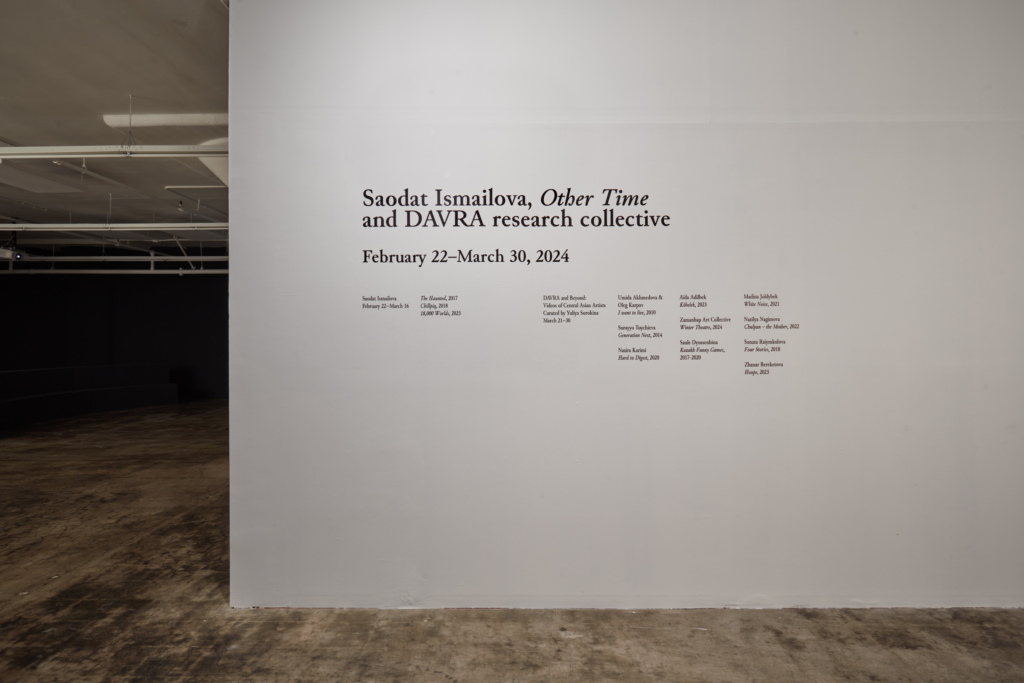

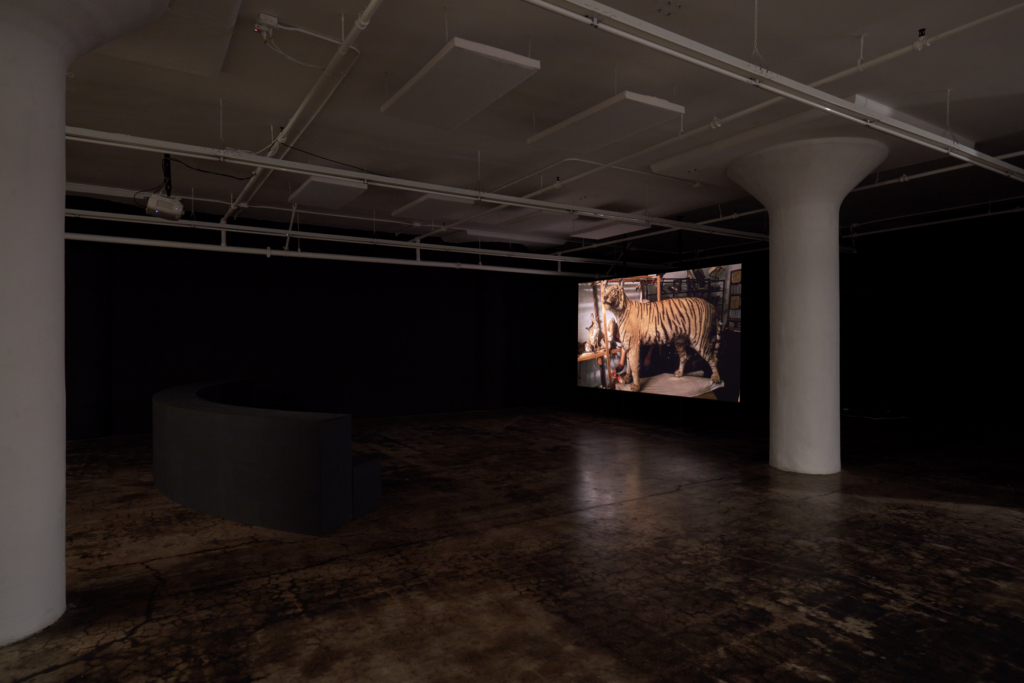
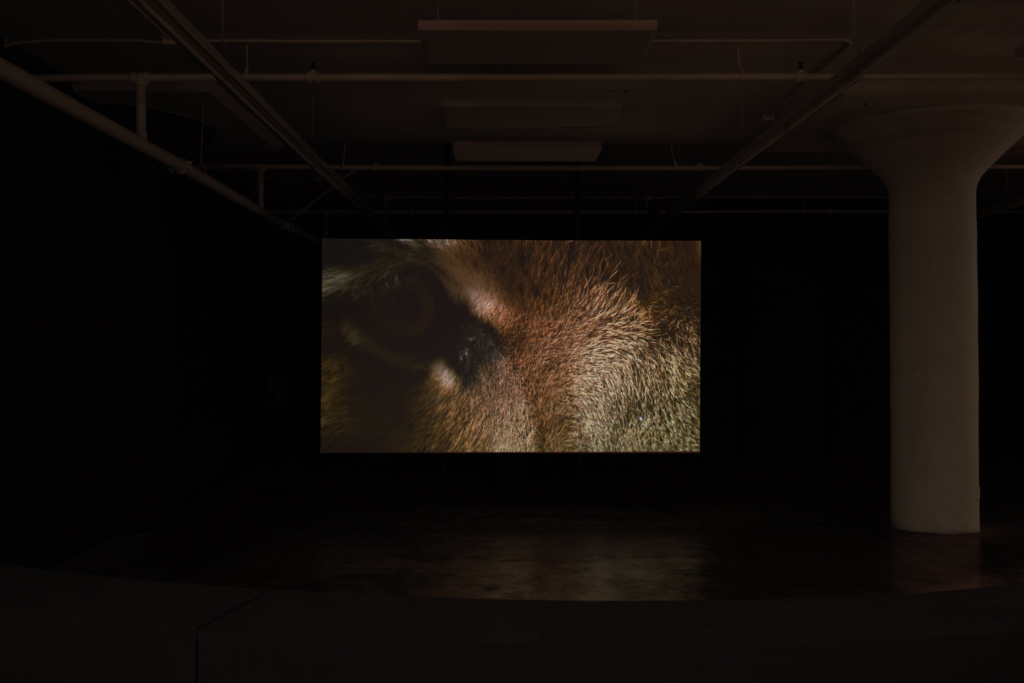


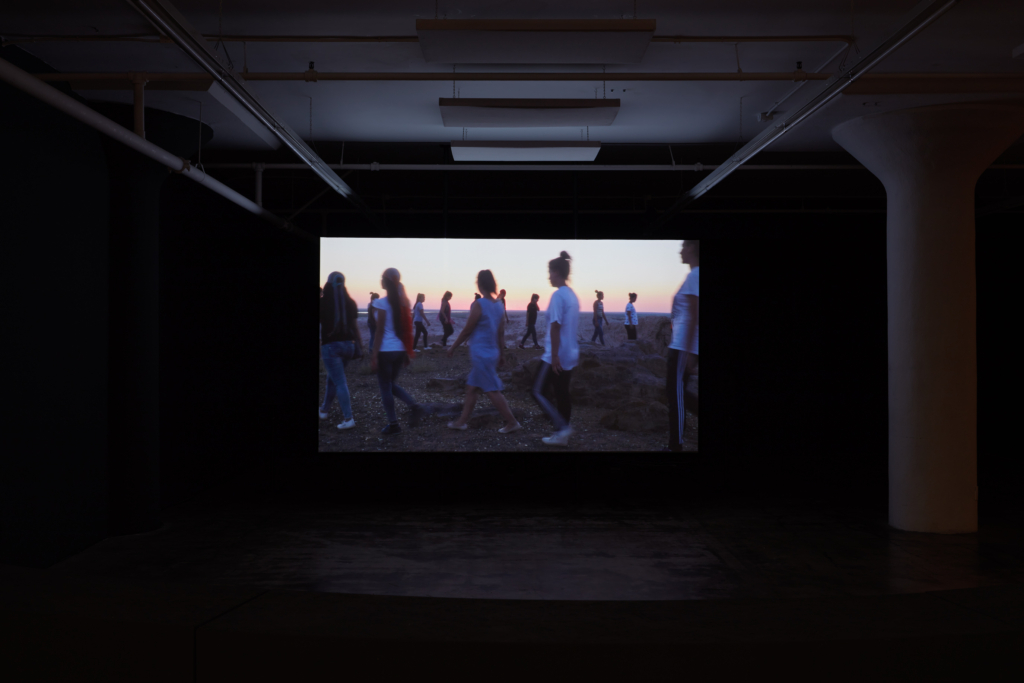
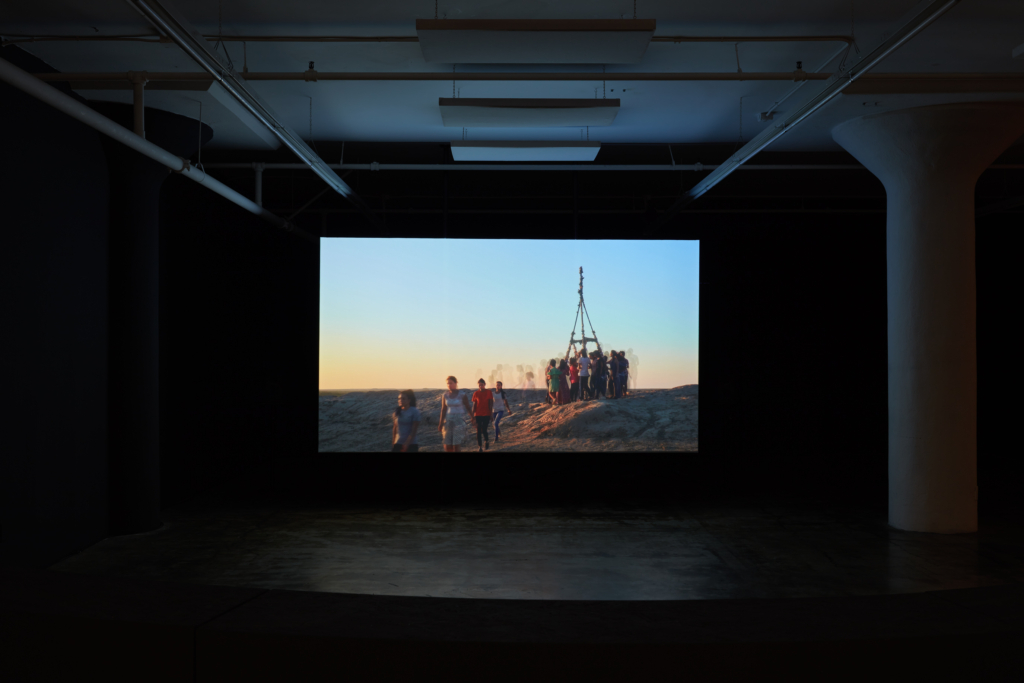
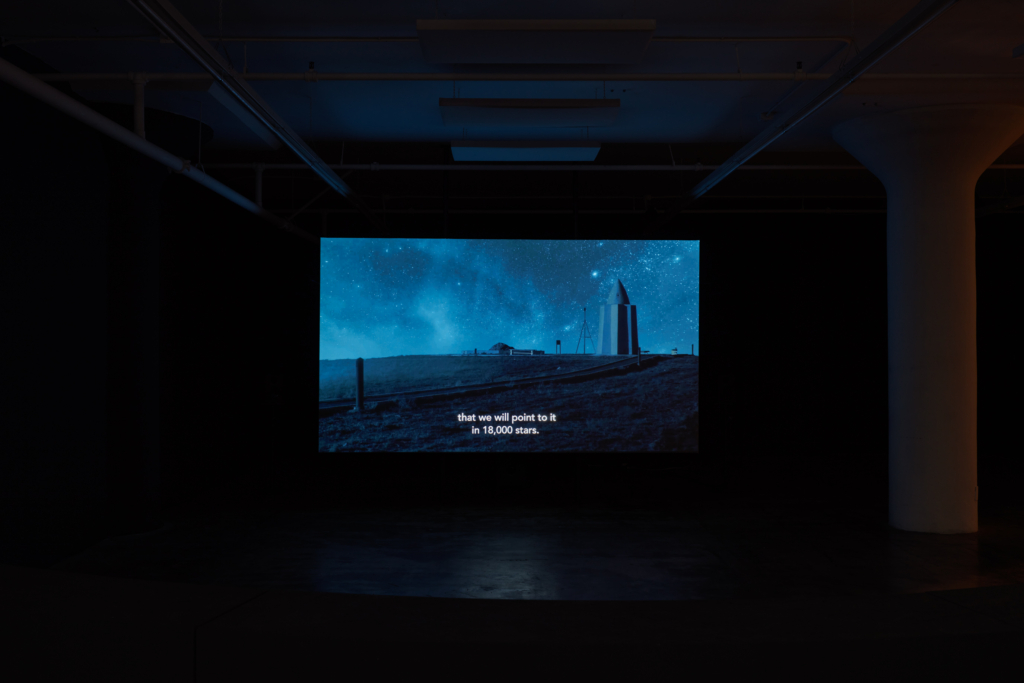
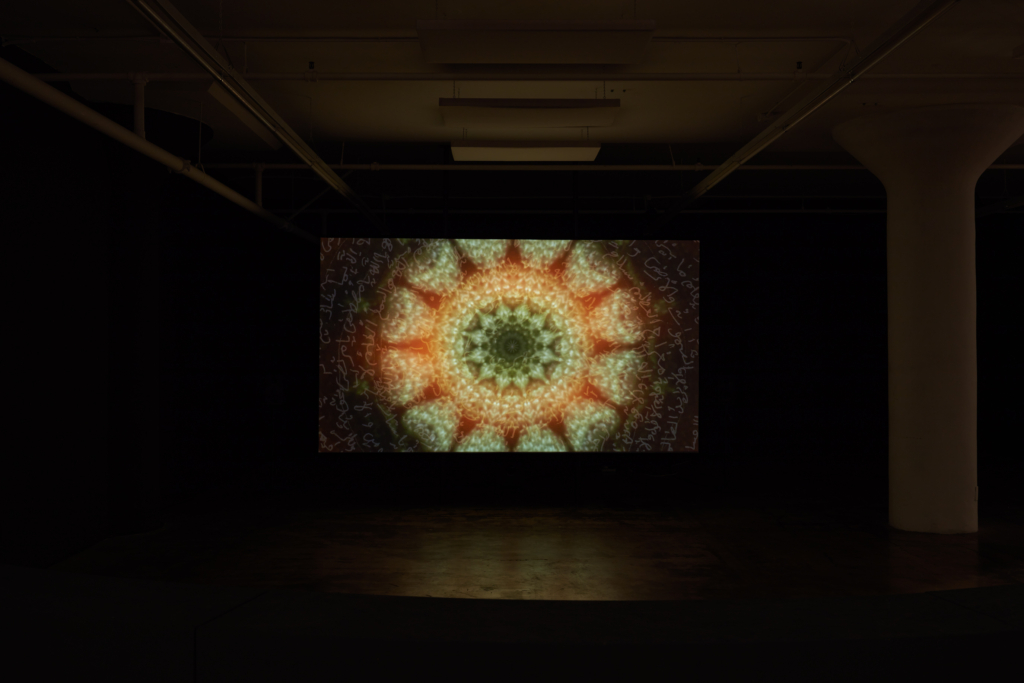 Photos by Evan Walsh.
Photos by Evan Walsh.
![]()

0